10 Top Native Plants for Southern California Gardens
http://decor-ideas.org 02/21/2015 03:13 Decor Ideas
From the stunning blue of California lilacs in spring to the joyful, daisy-like blooms of California sunflowers from spring to fall, and the spritely charms of pink chaparral currants in winter, the plants below have been selected for their wildlife value, minimal maintenance, gardening ease and availability in nurseries. Depending on the species, they are appropriate in moderate inland areas of Southern California desert or coastal regions. Each has its own wildlife niche, whether it’s birds, butterflies, hummingbirds, native bees or the plethora of pollinators. This selection of California native plants will add beauty and seasonal interest to low-water gardens.
Not in California? Browse plants native to more regions of the U.S.
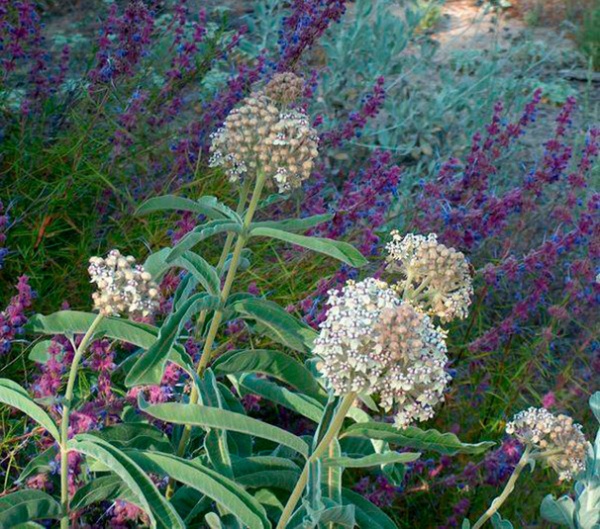
Milkweeds
(Asclepias spp)
Native to many regions and natural habitats in California; other species are native to other states
Monarch butterfly populations are declining. Asclepias species are critical to the survival of monarchs, as they are the only plants that monarch butterflies use for reproduction. Adult female monarchs lay their eggs on milkweeds so the young caterpillars can eat these delectable plants. In response to monarch declines, the Xerces Society solicited the cooperation of native seed companies to launch Project Milkweed, encouraging all of us to put these dazzling summer-blooming plants in our home gardens. Milkweeds are native to many U.S. regions; select milkweeds native to your region to best support the monarch butterflies.
See how to grow California milkweeds
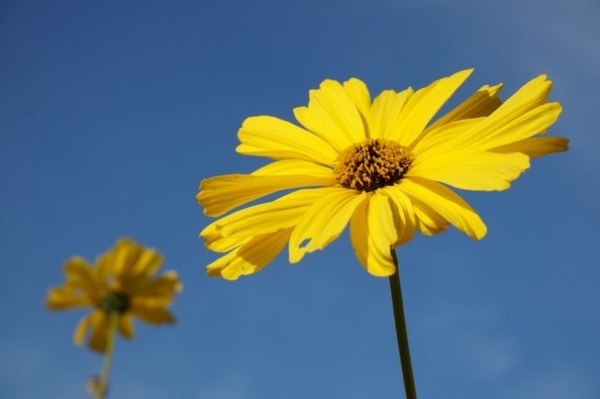
California Sunflower
(Encelia californica)
Native to coastal scrub below 1,600 feet from Santa Barbara County, California, south to northwestern Baja California
California sunflower is insect central in my garden. Its large, cheerful daisy-like flowers that bloom bountifully from spring to fall beckon numerous native bees, honeybees, butterflies, ladybugs and other beneficial insects. This fast-growing, effortless informal subshrub would work well on a steep bank for erosion control or in a colorful mixed border. Be sure to hard prune California sunflower between fall and late winter to improve its shape.
See how to grow California sunflower
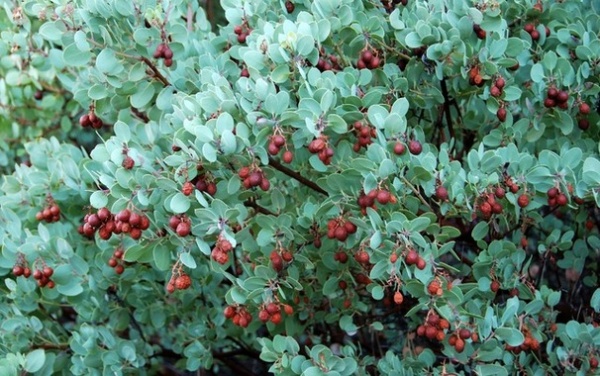
Big Berry Manzanita
(Arctostaphylos glauca)
Native below 4,500 feet to rocky slopes, chaparral and woodland from the northeast San Francisco Bay to much of Southern California
With the largest berries of any manzanita, big berry manzanita has a sculptural aesthetic, alluring urn-shaped winter flowers and evergreen foliage. Big berry manzanita will reliably grow to 10 feet tall and wide, sometimes reaching 12 feet tall and wide.
Big berry manzanita provides cover for all kinds of wildlife, draws hummingbirds and pollinators to its winter nectar, and brings birds and mammals who eat its spring berries. Established big berry manzanita prefers little or no summer irrigation and requires well-drained soil.
See how to grow big berry manzanita
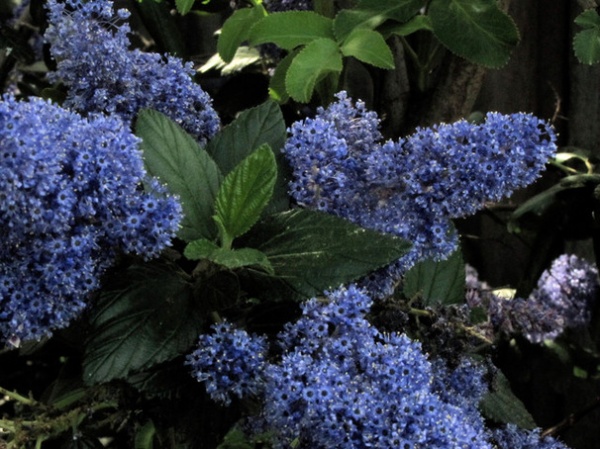
California Lilac
(Ceanothus spp)
The species and cultivars selected for gardens originate in California, from ocean bluffs to the foothills
It’s impossible for me to decide what I enjoy most about ceanothus: the striking blue flower clusters in spring, the lush evergreen foliage or the tons of native bees — including cute bumblebees — who feed on it. Some cultivars of ceanothus have small, crinkly textured leaves — like the shrubs ‘Julia Phelps’ and ‘Dark Star’ — whereas others have large, glossy leaves, like the small tree ‘Ray Hartman’ and the ground cover ‘Yankee Point’. All have deep blue-purple to powder blue or white flowers that burst open in spring, welcoming all the early pollinators to the feast. Ceanothus requires excellent drainage and wants no summer water after it’s established.
See how to grow California lilac
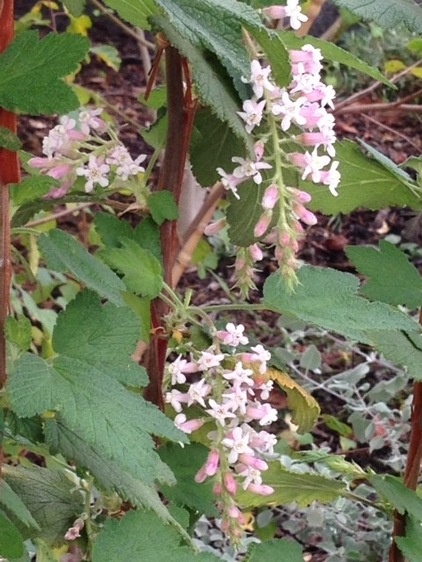
Pink Chaparral Currant
(Ribes malvaceum)
Native to chaparral, woodlands and forests below 4,500 feet in many regions of California and Baja
Fast growing to 5 or 6 feet, pink chaparral currant and its elegant flower tassels bring enchantment to California winter gardens. It provides food for critters throughout the year: hummingbirds and other pollinators covet its nectar in fall, winter and spring, and birds relish the berries from spring to summer. The tailed copper butterfly (Lycaena arota) uses Ribes species as host plants for its larvae.
Drought tolerant and resistant to oak root fungus, pink chaparral currant is a model citizen in the dry shade of oaks. It can also be sited on dry slopes, in a border or as a backdrop, or grouped for a low screen. Due to the popularity of pink chaparral currant, there are many cultivars available, like this ‘Dancing Tassels’.
See how to grow pink chaparral currant
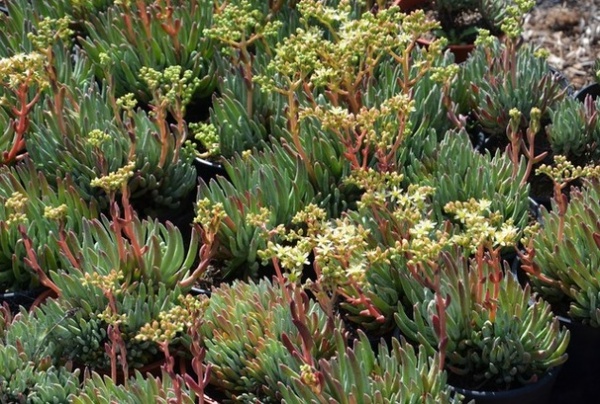
Liveforever
(Dudleya spp)
Native to cooler regions of California, Arizona, coastal Oregon and Baja California
While Dudleyas go dormant in summer, they awaken with just a little rain in the fall. Dudleyas look especially impressive fall through spring, when their leaves are plumped up. In spring they tempt elated hummingbirds with a feast of prized flower nectar. These easy succulents add texture and interest to dry gardens.
There are a number of species available, sporting different shapes, sizes, foliage and flower colors. My favorites include Dudleya hasseii (shown here), for its seasonally colorful finger-like leaves; D. brittoni, for its dramatic white, leafy rosettes; D. pulverulenta, for its bell-like red flowers; and D. palmeri, for its lush green leaves in winter and red-tipped leaves in summer. All species of Dudleya need a well-drained rock garden or container. Plant Dudleyas with native stonecrops, like broadleaf stonecrop (Sedum spathulifolium).
See how to grow Dudleyas
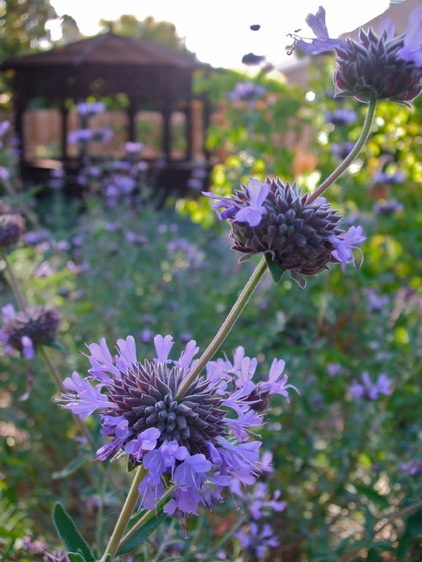
Cleveland Sage
(Salvia clevelandii)
Native to chaparral and coastal scrub in Southern California and northern Baja California
Like other salvias, Cleveland sage sends its fragrance on the warm summer breeze, calling all the hummingbirds, native bees, honeybees and butterflies. (Be sure you like the vivid Old West fragrance before purchasing this rugged sage.) Cleveland sage’s delightful blue whorls of flowers are clustered on long stems from spring through summer. Later its seed heads add texture and dimension to low-water gardens — and also bestow seeds on birds.
As Cleveland sage is one of the larger and more robust California sages, many cultivars have been propagated for dry, well-drained gardens, including ‘Winnifred Gilman’, ‘Betsy Clebsch’, ‘Whirly Blue’ and ‘Allen Chickering’.
See how to grow Cleveland sage
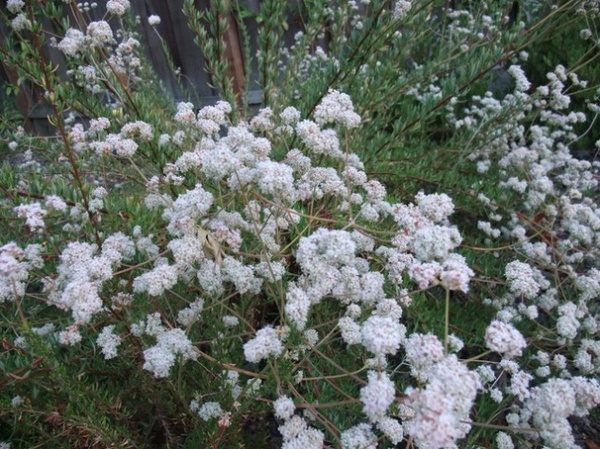
California Buckwheat
(Eriogonum fasciculatum)
Native to dry slopes and in washes and canyons below 8,000 feet, from the San Francisco Bay Area to Southern California, Baja California, southern Nevada, southwestern Utah and Arizona
These quotes from my friends in the nursery trade exemplify native buckwheat’s popularity among California gardeners: “candy for pollinators,” “the most popular nectar source for butterflies” and “when in doubt, use buckwheat.” This species of buckwheat is no slacker. California buckwheat attracts native bees, honeybees, butterflies and unusual bugs, including beneficial predatory insects. The bountiful seeds of California buckwheat are relished by birds. From the large clusters of dependable dainty white flowers in the summer to deep cinnamon-brown seed heads in fall, California buckwheat creates a sense of place in the California sun.
See how to grow California buckwheat
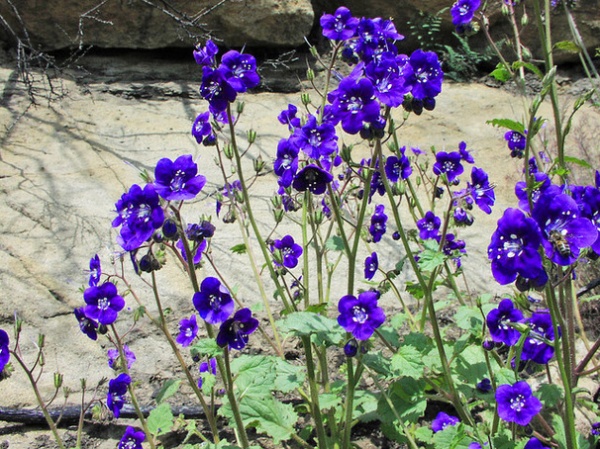
Annual Phacelias
(Phacelia spp)
Native to various regions of California, particularly Southern California; some species are native to other states
Breathtaking bell-shaped blue flowers in summer sun and both nectar and pollen for the pollinators — what more could you want from a drought-tolerant annual? Phacelias are magnets for butterflies, native bees, honeybees and other pollinators and are perfect for rock gardens, dry mixed beds and mass plantings. All phacelias are delightful and enchanting in low-water gardens. Select the species that is native to your region for greatest success.
Caution: The hairs on the stems and leaves may produce dermatitis in those who are sensitive. Wear long sleeves and gloves when working near phacelias.
See how to grow annual phacelias
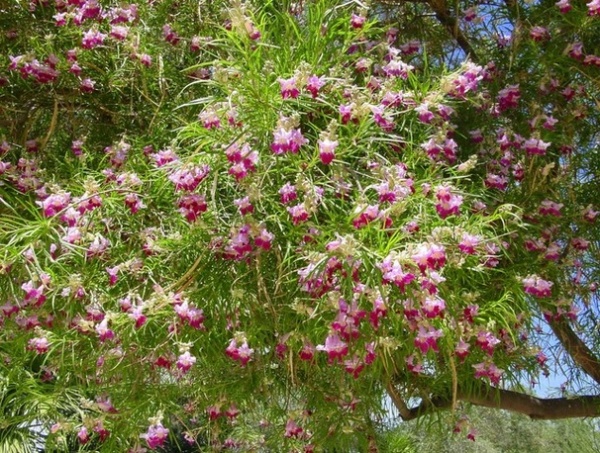
Desert Willow
(Chilopsis linearis)
Native near waterways in the Mojave and Colorado deserts of the Southwest
Desert willow is an exquisite addition to a hummingbird garden, with brilliant, large fragrant flowers. From May until September, pink to lavender flowers grace this willow-like deciduous small tree. Easy and fast growing, desert willow excels inland and in desert regions with full sun. Once established, desert willow can be drought tolerant, yet as a riparian plant it prefers summer irrigation two to three times a month. It is tolerant of alkaline soil, sand, clay and seasonal flooding.
See how to grow desert willow
More: Browse plants native to more regions of the U.S.
Related Articles Recommended












